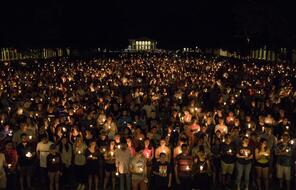
Post-Viewing: Responding to Hate in Our Communities Today
At a Glance
Language
English — USSubject
- History
Grade
6–12- The Holocaust
Overview
Overview
The lessons in this final section of the unit relate Schindler’s List to the contemporary world. In this lesson, students focus on outbreaks of racial hatred in cities and schools in the United States and Europe. Reflecting on the hatred that unites these stories, students will consider the legacies of Schindler’s List and the Holocaust and how they might strengthen their communities to combat the presence of bullying, prejudice, and hate. Students will think more concretely about ways to do so in the following lesson.
Preparing to Teach
A Note to Teachers
Lesson Plans
Activities
Extensions
Materials and Downloads
Resources from Other Organizations
Post-Viewing: Responding to Hate in Our Communities Today
Post-Viewing: The Persecution of the Rohingya and the Persistence of Genocide
Post-Viewing: Building a Toolbox against Hate
Unlimited Access to Learning. More Added Every Month.
Facing History & Ourselves is designed for educators who want to help students explore identity, think critically, grow emotionally, act ethically, and participate in civic life. It’s hard work, so we’ve developed some go-to professional learning opportunities to help you along the way.
Exploring ELA Text Selection with Julia Torres
On-Demand

Working for Justice, Equity and Civic Agency in Our Schools: A Conversation with Clint Smith
On-Demand

Centering Student Voices to Build Community and Agency
On-Demand











